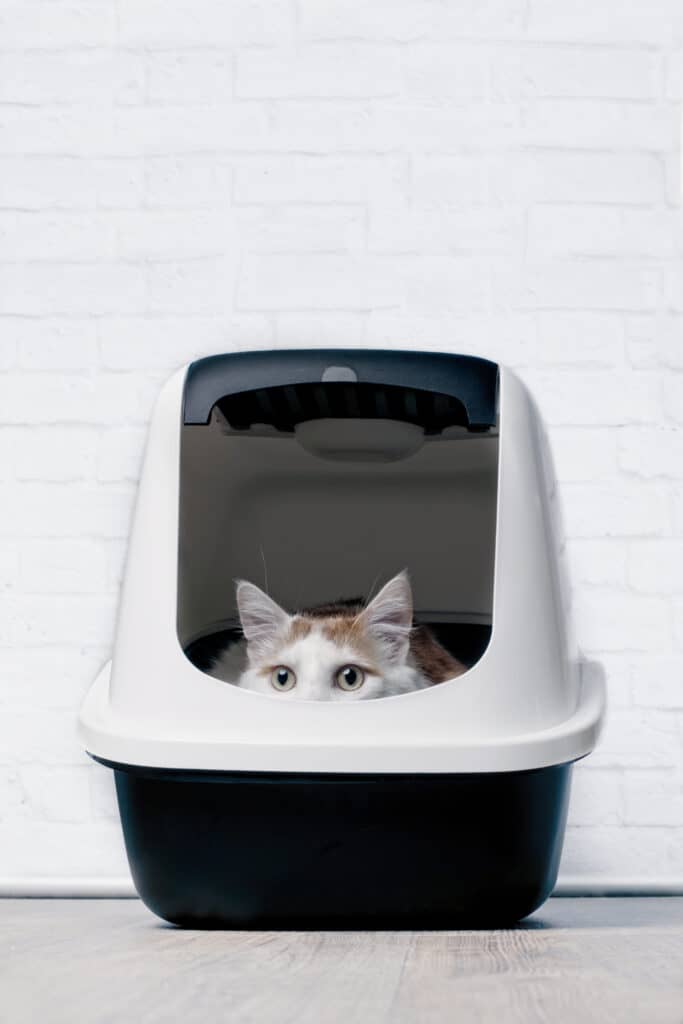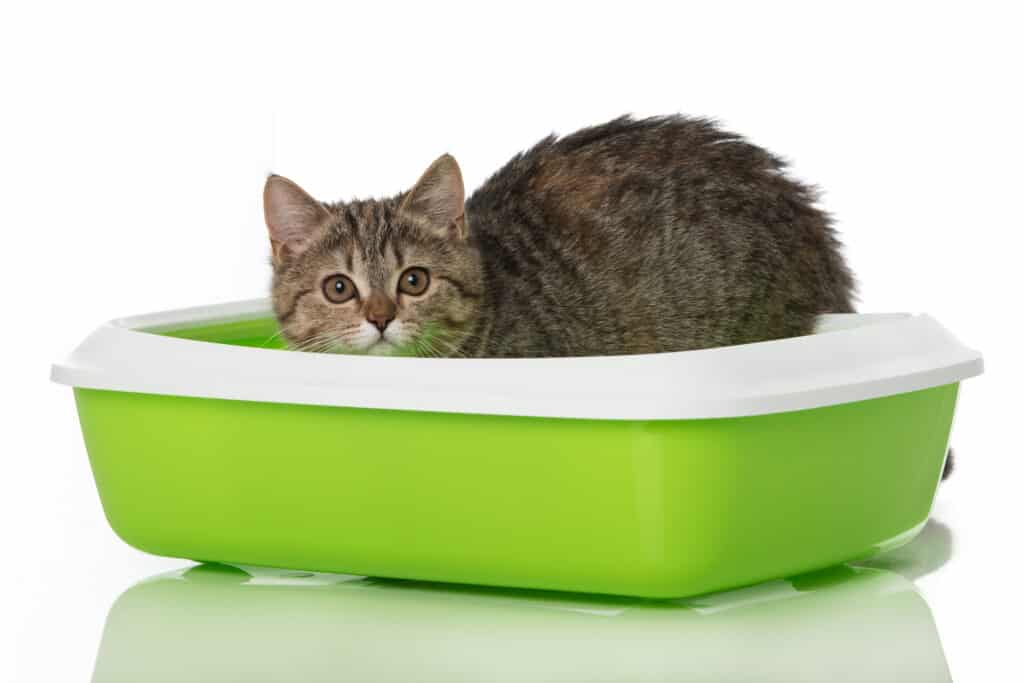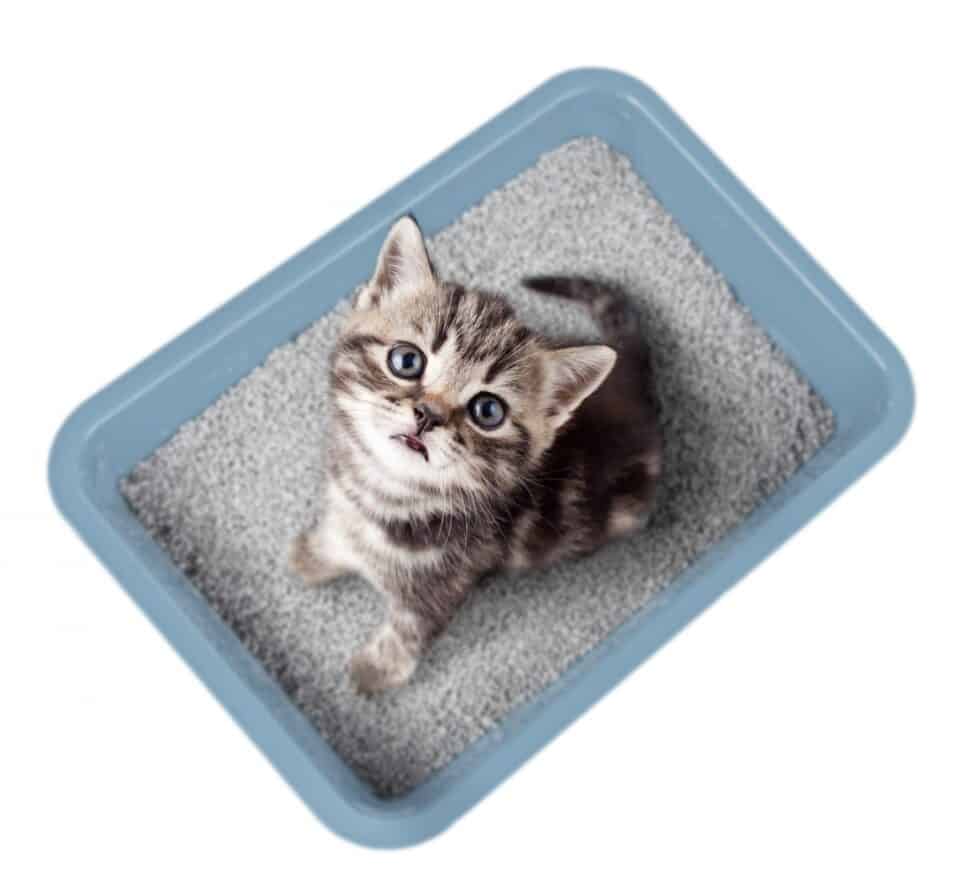Contents
All products and services on Project PAWS are independently selected by our editors, contributors, and veterinary experts. This post contains affiliate links. As an Amazon Associate I earn from qualifying purchases.To learn more, view my disclosure policy.
Last Updated on October 29, 2020 by Aimee
Litter Box Training: Despite popular belief, cats are not born potty trained. Cats, both wild and domestic like to have a clean-living area. It is actually a throwback to wild cats innately keeping their dens clean to prevent disease and sickness to themselves. Dams (mom cats) also demonstrate behavior of cleaning, eating and soiling for the kittens by eliminating outside the living area or in a litter box. Cats are observational learners, mimicking behavior of their moms and litter mates, therefore even before weaning and separating from their mom they have observed and mimicked elimination in the litter box. This gives cats a head start on being potty or box trained, making it seem like they are born potty trained.
“THE WORLD IS YOUR LITTER BOX”
-unknown
When bringing a new cat home regardless of age it should not be assumed they are litter or potty trained. Make sure to give them a proper introduction to the litter box by showing them where it is several times a day and after eating and napping. You can give them a treat right when they finish to encourage them to use it again. The treat tells them they made a good choice.

The Best Place To Put The Litter Box
When deciding where to put the box it is common for people to pick places in the home convenient for them, however cats are sensitive to their environment and act accordingly.
Most cats prefer a quiet and semi – private location to do their business, even animals can be shy and private about their potty time. Try to pick a laundry room that is out of way or a spare bathroom, bedroom or closet and make this area easily accessible to the kitty. The path to get there should be clutter free and always available to them.
Place the box in a quiet location away from their eating and sleeping; no one wants to eat in the bathroom.
How Many Litter Boxes Do I Need?
It is important to have the right number of litter boxes: You should have at least one per cat, plus one extra. If you have more than one cat, place the boxes in two different locations in the home away from each other, as some cats can be territorial about boxes.
The litter box should be made of nonabsorbent material. Covered litter boxes are popular with owners, but cats are often not a fan. Cats like private areas, but not tight dark areas, this can be scary for them and they won’t enter the box. When starting off a small kitten in litter box training pick a litter box with very low side so it can get in and out with no trouble, you can move up in size as they grow. Once you have found a location for the box that works for your cat, don’t move it around.
Litter Box Training Tips
If you find your cat or young kitten eliminating outside of the litter box, kindly pick them up and gently place them in the box. Don’t yell or be rough, which will just frighten him and possibly cause them to associate the litter box with punishment.
What Is The Best Cat Litter To Use?
Kitty litter a personal choice. I recommend experimenting a bit to see which type your cat prefers. They vary from clumping, non-clumping, crystals, flush-able and some even turn colors to show you if your cat has healthy urine. Some litter tend to stick the cat’s feet and get tracked throughout the house and some don’t. Avoid using scented litters, this often repel cats and cause elimination outside the box.
What Is The Best Way To Clean A Cat Litter Box?
Cleaning the box is just as important as flushing your own toilet. Scoop out all waste at least once a day and change the litter entirely at least once a week. If you have more than one cat you might need to clean the litter box twice a day. When you are replacing the litter on a weekly basis the litter box should be cleaned with a vinegar water solution; this is not harmful to your cat and will help keep odors and bacteria down. Don’t forget to replace the litter boxes!! Litter boxes are plastic which can harbor bacteria, throw them away and replace with a new one every six months.

If your previously litter box trained cat begins to eliminate elsewhere, it may be for a number of reasons, including:
- You’ve changed litter type
- Litter is not cleaned on a regular basis
- Another cat who is keeping being territorial and is keep them out
- Another change in the house or environment near the box
- Cat has a medical problem, and you need to have them check by the vet

